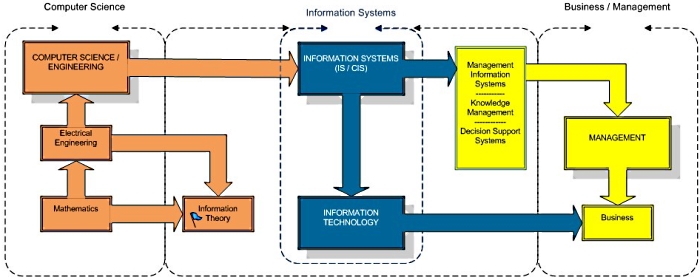The study of information systems is the study of software and hardware networks that work together to collect, create, process, filter and distribute (usually digital) data. These networks can be owned privately or corporately, though the latter is more commonly studied. This is a field of study that incorporates elements of business studies into computer science, often considering business models that can have algorithmic implementations in computers.. The study covers everything from this angle from soft- and hardware design principles to the processes by which they manage data securely.

Relationship between business studies and computer science in information systems. [ Photo credit: Dbmesser ]
The practical use of studying information systems is so that one may gain an understanding of trends and behaviors in a network system and therefore use that knowledge to make better decisions and manage operations more efficiently. Better management of personnel is a useful side-effect of information systems study too, as the field covers not only the secure transfer of data but how the humans involved in the network interact with the machines and each other as well.
In the past, information systems studies was viewed solely as a pyramidal structure of systems that roughly equated to the hierarchy of the organization of study. This would typically go transaction processing, management, decision-making and executive. While still useful in some ways, new technologies have shaken this order up in some ways, leading to a new, evolving field of information systems emerging.
© BrainMass Inc. brainmass.com June 30, 2024, 10:10 am ad1c9bdddf